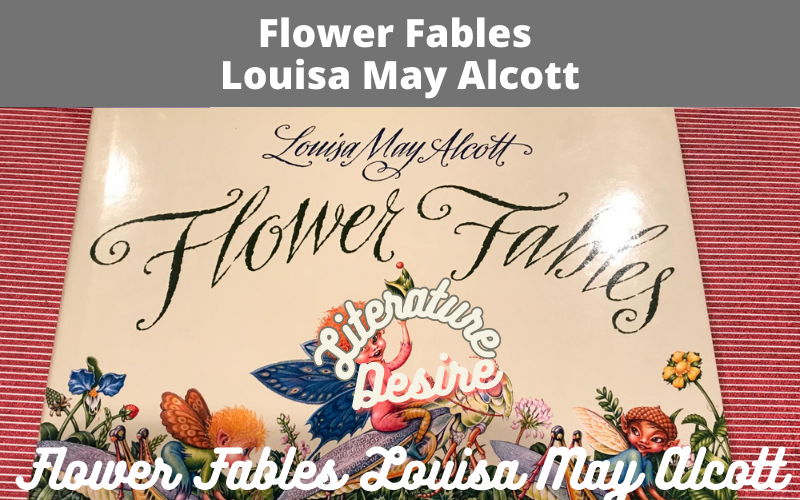Flower Fables is a delightful collection of fairy tales written by Louisa May Alcott, the acclaimed American author best known for her novel, “Little Women.” Published in 1854, this enchanting book offers readers a glimpse into Alcott’s early storytelling prowess and showcases her ability to craft imaginative narratives that captivate audiences of all ages.
In this article, we will delve into the world of “Flower Fables” and explore the life of Louisa May Alcott, the brilliant mind behind this whimsical collection. We will analyze the themes, characters, and literary significance of “Flower Fables,” shedding light on its impact on children’s literature and Alcott’s writing career. Additionally, we will discuss the reception of the book upon its release and its lasting legacy in the literary landscape.
Flower Fables: Louisa May Alcott’s Whimsical World
The Life of Louisa May Alcott
Before we embark on our exploration of “Flower Fables,” let us acquaint ourselves with the extraordinary life of Louisa May Alcott. Born in Germantown, Pennsylvania, on November 29, 1832, Alcott was raised in a household brimming with intellectual pursuits.
Her father, Amos Bronson Alcott, was a transcendentalist philosopher, and her mother, Abigail May Alcott, was a social worker and women’s rights activist.
Exploring “Flower Fables”
The Concept of “Flower Fables”
At the tender age of sixteen, Alcott wrote “Flower Fables” as a collection of fairy tales for Ellen Emerson, the daughter of Ralph Waldo Emerson, a renowned essayist and poet. Drawing inspiration from the beauty of nature, Alcott’s stories transport readers to a world where flowers come alive and teach valuable lessons through their experiences.
Themes and Messages in “Flower Fables” by Louisa May Alcott
“Flower Fables” weaves together various themes, including kindness, selflessness, and the importance of imagination. Through her tales, Alcott imparts moral lessons that resonate with readers, encouraging them to embrace virtues such as empathy, generosity, and perseverance.
Characters in “Flower Fables”
The enchanting world of “Flower Fables” is populated by an array of vibrant characters. From the adventurous Thistledown to the wise-eyed Lily-Bell, each character possesses unique qualities and contributes to the overarching narrative. Alcott’s skillful characterization breathes life into the flowers, endowing them with distinct personalities that engage readers on a profound level.
Literary Significance of “Flower Fables”
Influence on Alcott’s Writing Career
“Flower Fables” played a pivotal role in shaping Alcott’s writing career. It marked the beginning of her exploration into the realm of children’s literature, a genre in which she would excel. The book showcased Alcott’s storytelling prowess, providing a glimpse into the boundless imagination that would later manifest in her more renowned works.
Impact on Children’s Literature
Alcott’s “Flower Fables” holds a significant place in the landscape of children’s literature. Its imaginative storytelling, moral teachings, and engaging characters set a precedent for future authors in the genre. The book paved the way for Alcott’s later successes, solidifying her reputation as a beloved children’s author.
Reception and Legacy of “Flower Fables”
Initial Reception: Flower Fables Louisa May Alcott
Upon its publication, “Flower Fables” garnered positive reviews, with critics praising Alcott’s ability to craft enchanting narratives. Although the book did not achieve the same level of recognition as her later works, it served as an important stepping stone in Alcott’s literary journey.
Long-Term Influence: Flower Fables Louisa May Alcott
While “Flower Fables” may have been overshadowed by Alcott’s subsequent achievements, its influence on the world of children’s literature cannot be understated. The book’s themes and imaginative storytelling continue to inspire authors and captivate young readers, ensuring its enduring legacy.
Conclusion: Flower Fables Louisa May Alcott
Louisa May Alcott’s “Flower Fables” remains a testament to her creative genius and ability to captivate readers with her imaginative tales. Through its enchanting narratives and memorable characters, the book leaves an indelible mark on the world of children’s literature.
Alcott’s contribution to the genre continues to resonate with audiences, reminding us of the power of storytelling and the enduring magic found within the pages of a book.
Frequently Asked Questions
Yes, Louisa May Alcott is best known for her novel “Little Women,” which has become a literary classic. She also wrote several other novels, including “Little Men” and “Jo’s Boys,” among others.
While “Flower Fables” is primarily targeted at young readers, its enchanting stories and moral teachings can be enjoyed by readers of all ages.
“Flower Fables” served as a stepping stone for Alcott, showcasing her storytelling abilities and setting the stage for her future successes in the realm of children’s literature.
The characters in “Flower Fables” are personified flowers, imbued with unique personalities and traits by Louisa May Alcott’s vivid imagination.



